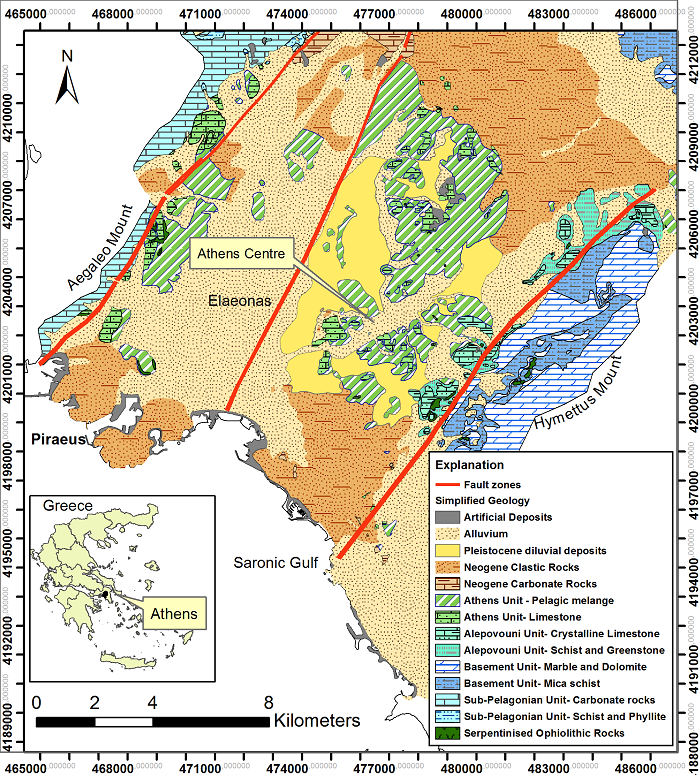

The bedrock geology of Athens is comprised of 4 different geotectonic units that form and outcrop in the mountains surrounding the city, as well as in hills within the Athens Basin (see simplified geological map): (a) the lowest basement unit is composed of metamorphic rocks, including marble, dolomite, and mica-schist; (b) this is tectonically overlain by the Alepovouni unit that is also comprised of metamorphic rocks, including crystalline limestone, schist and greenstone; (c) the Athens Unit, which outcrops in the hills of western and central Athens Basin is an Upper Cretaceous mélange that includes pelagic sediments consisting of marly limestone, shale, sandstone, tuff and ophiolithic blocks and neritic limestone; and (d) the Sub-Pelagonian unit, which mainly consists of limestone and dolomitic limestone.
Post-orogenic Neogene to Quaternary deposits cover the alpine bedrock. Lithologically, these include Neogene coastal marine, continental and lacustrine carbonate and clastic sediments, and thick Quaternary alluvial fans at the foothills of the surrounding mountains. Natural soil within the city is generally thin. Soil types range from Calcaric-Lithic-Leptosols (renzinas) on the mountainous margins of the basin to Calcaric Fluvisols and Regosols in the western part of the study area and Rhodic Luvisols over the eastern part of the basin.
